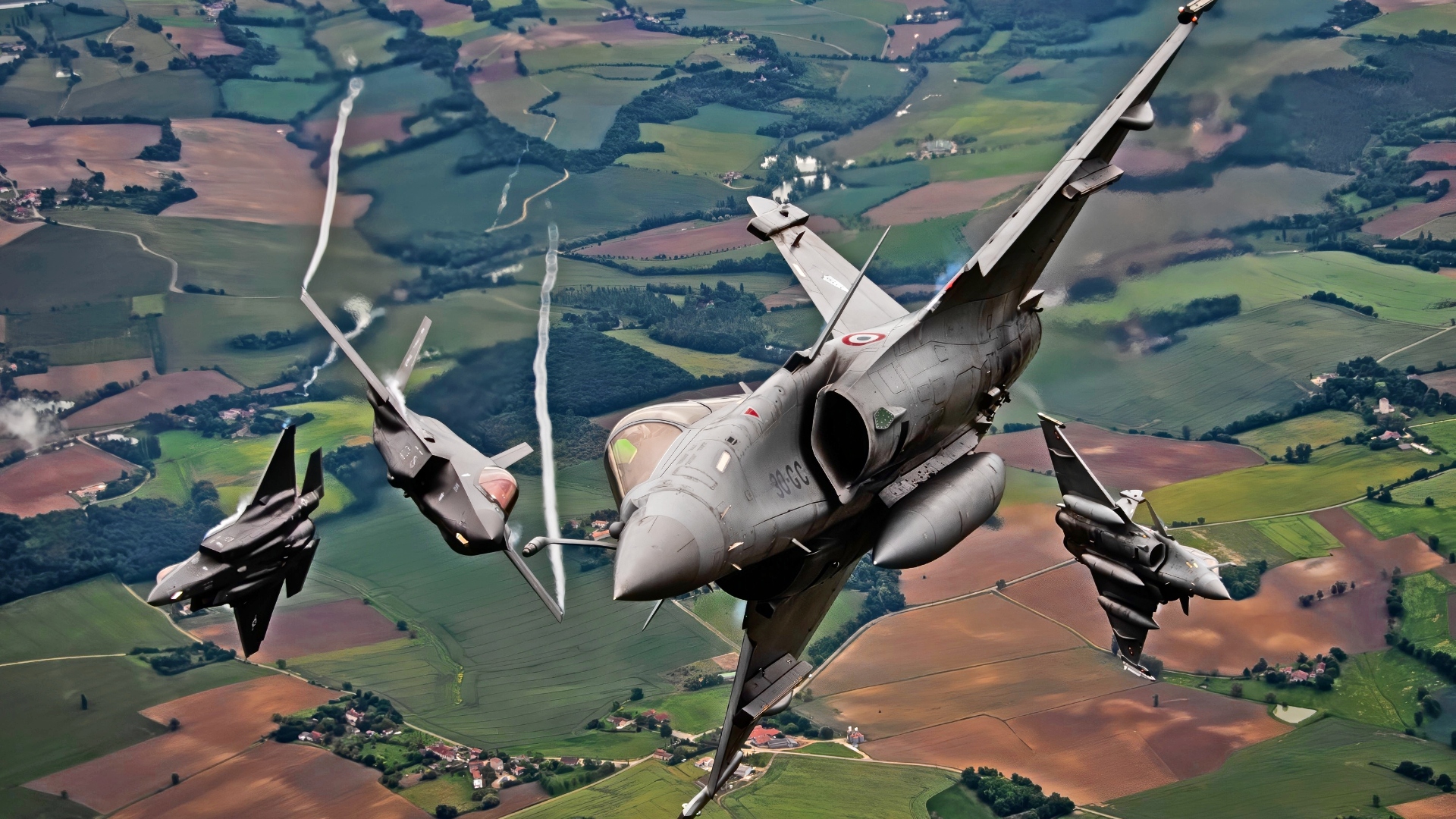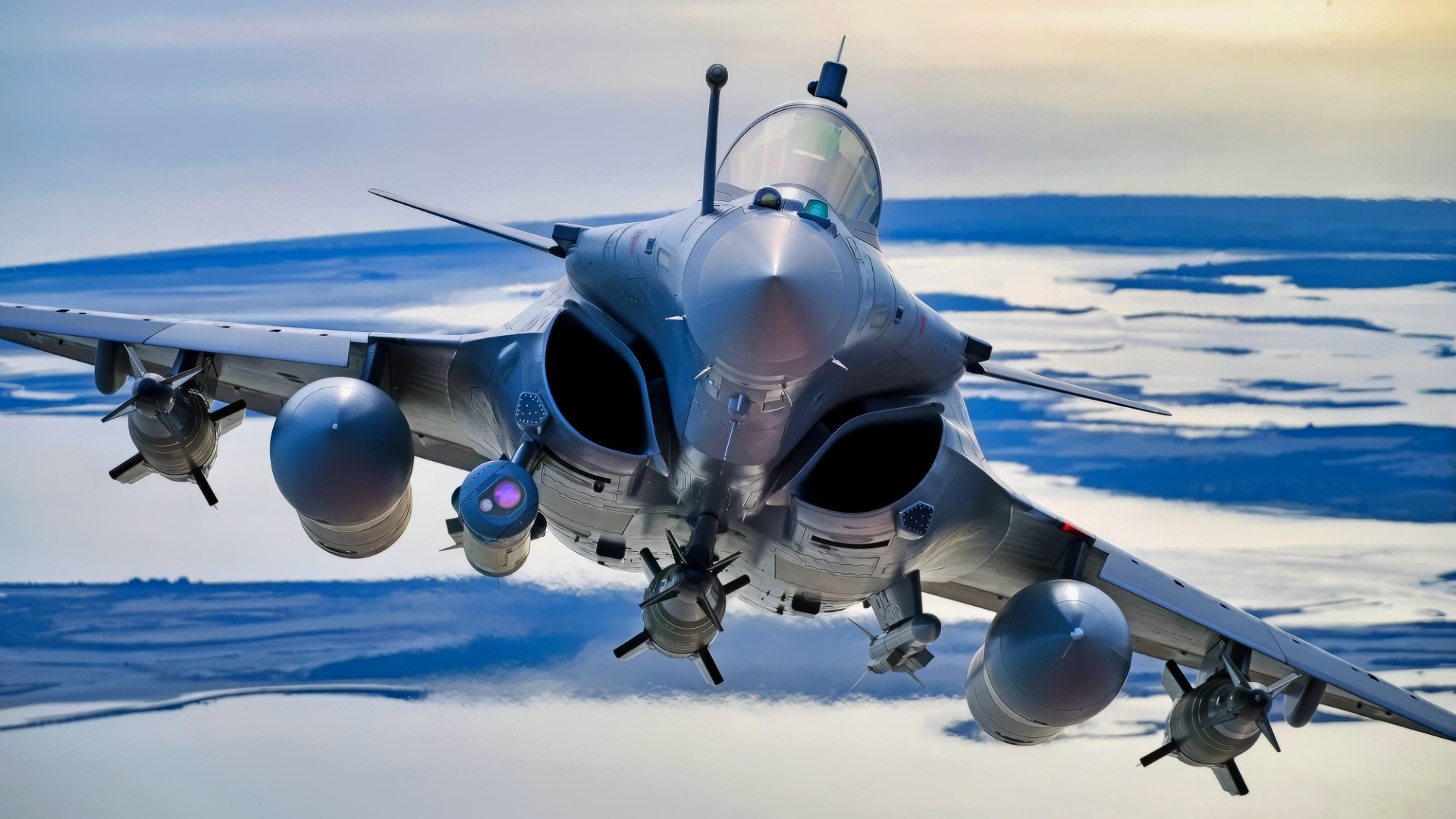Key Points and Summary – The Dassault Rafale is currently one of the most advanced fighter jets in France’s Air Force. It combines advanced avionics, high-performance engines, and a diverse payload all into an aerodynamic air frame.
-On the other hand, the KF-21 is the newest fighter jet produced by South Korea. While it is not yet a true stealth fighter, it incorporates advanced stealth features that significantly reduce its visibility.
-This, combined with its sophisticated avionics and EW systems, makes the KF-21 a deadly presence in the skies.
-If the Dassault Rafale and the KF-21 ever met each other in combat, which fighter is most likely to come out on top?
The Dassault Rafale vs. the Boramae
The Dassault Rafale is a French multirole fighter developed by Dassault Aviation. It features a twin-engine, canard delta wing configuration that emphasizes agility and aerodynamic efficiency.
The Rafale was designed to be an “omnirole” aircraft, meaning it could perform air superiority, ground attack, reconnaissance, and nuclear deterrence missions without requiring reconfiguration.
It first flew in 1986 and entered service in 2001. Over the years, it has proven itself in multiple combat theaters, including Libya, Mali, Afghanistan, Syria, and Iraq.
In contrast, the KF-21 Boramae is South Korea’s first advanced fighter jet, developed by Korea Aerospace Industries (KAI) with support from Indonesia.

Two U.S. Air Force F-35A Lightning IIs assigned to the 4th Fighter Squadron, Hill Air Force Base, Utah, and two Dassault Rafales assigned to the 1/4 Gascogne Fighter Squadron, 113 Saint-Dizier-Robinson air base, France, break formation during flight May 18, 2021 over France. The flight was apart of the Atlantic Trident 21 exercise which is a joint, multinational exercise involving service members from the U.S., France and the U.K., and is aimed at enhancing fourth and fifth generation integration, combat readiness and fighting capabilities, through conducting complex air operations in a contested multinational joint force environment. (U.S. Air Force photo by Staff Sgt. Alexander Cook)
It features a more conventional twin-engine layout with stealth shaping.
The KF-21 first flew in 2022 and is expected to enter service around 2026.
Although it has not yet seen combat, it is part of a broader effort to replace older aircraft, such as the F-4 Phantom and F-5 Tiger, in the Republic of Korea Air Force.
Avionics and Electronics
In terms of avionics and sensors, the Rafale is equipped with the Thales RBE2-AA active electronically scanned array (AESA) radar, the SPECTRA electronic warfare suite, and an infrared search and track (IRST) system known as Optronique secteur frontal.
Its cockpit features a wide-angle head-up display, voice command capability, and a glass interface that enhances situational awareness.
The KF-21 also features an AESA radar, developed indigenously by South Korea, along with an IRST system and a modern electronic warfare suite (very little is known about either of these systems).
According to reports, its radar is similar in performance to AN/APG-83 radar which has a range of around 230 miles.
Its cockpit is similarly advanced, with digital displays and a mission computer designed to support network-centric operations.
While the Rafale’s systems have been tested and combat proven on multiple occasions, when it comes to the KF-21’s systems, all we can do is speculate with the little information we have.
Engine Performance and Survivability
Performance wise, the Rafale is powered by two Snecma M88-2 turbofan engines, each producing 75 kilonewtons of thrust with afterburner.
It can reach speeds of Mach 1.8 and has a combat radius of approximately 1,850 kilometers.
The engines also allow it to supercruise at speeds of around Mach 1.4 depending on the configuration which enhances fuel efficiency and reduces infrared signature. The KF-21 uses two GE F414-GE-400K engines, each capable of producing nearly 98 kilonewtons of thrust with afterburner. It has a similar top speed of Mach 1.81 but boasts a longer combat radius of around 2,900 kilometers. This gives it an edge in endurance and operational reach, although it does not currently have supercruise capability.
In terms of survivability, the KF-21 utilizes several stealth technologies that reduce its radar cross-section. It employs stealth shaping and radar-absorbing materials that help reduce its visibility across all spectrums.
However, current versions of the aircraft lack an internal weapons bay, which forces the fighter to carry its munitions externally (for now).
This harms the otherwise decent stealth profile of the KF-21. The Rafale, on the other hand, is not a stealth fighter by any means. While it utilizes EW systems to increase survivability, the aircraft has a significantly larger RCS than the KF-21.
Armaments
When it comes to weapons and payload, the Rafale has 14 hardpoints and can carry a wide range of air-to-air and air-to-ground munitions.
These include the MICA IR/EM missiles, the long-range Meteor missile, SCALP-EG cruise missiles, AASM precision-guided bombs, and laser-guided munitions.
It also features a 30 mm GIAT cannon and can be equipped with the ASMP-A nuclear missile, providing it with strategic deterrence capabilities.
The KF-21 features 10 hardpoints and is compatible with Western munitions, including the AIM-120 AMRAAM and AGM-65 Maverick.
It also carries precision-guided bombs and is expected to integrate the Meteor missile in future blocks. Its internal cannon is a 20 mm M61A2 Vulcan. Unlike the Rafale, the KF-21 does not currently have nuclear capability.
Who Wins in 2 Words? Dassault Rafale
Envisioning a battle between these two is challenging based on the limited information available. In a BVR engagement, the KF-21 would likely win due to its (allegedly) superior avionics. Its stealth systems, while imperfect, do give it a smaller RCS than the Rafale, making it harder to detect.
However, as mentioned earlier, the lack of an internal weapons bay compromises the fighter’s stealth profile, which could allow the Rafale to detect and engage the KF-21.
In close-range combat, the Rafale’s delta-canard configuration gives it exceptional agility, allowing it to outmaneuver opponents in dogfights.
The KF-21, while fast and stealthy, has a more conventional aerodynamic layout and may not match the Rafale’s agility.
That being said, the KF-21 is still in the early stages of its service life. Future upgrades, especially to its stealth capabilities and combat range, could transform this fighter from an already exceptional aircraft to a world-class fighter jet.
About the Author: Isaac Seitz
Isaac Seitz, a Defense Columnist, graduated from Patrick Henry College’s Strategic Intelligence and National Security program. He has also studied Russian at Middlebury Language Schools and has worked as an intelligence Analyst in the private sector.
More Military
X-43A: It Could Hit Mach 9.6 and NASA Walked Away
Trump Wants a U.S. Navy Battleship Comeback: Reality Has Other Ideas
Russia’s Su-34 ‘Fighter Bomber’ Is Getting Blasted Out of the Skies Above Ukraine
Boeing X-32 vs. YF-23 Black Widow II Stealth Fighter: Who Wins Summed Up in 4 Words










